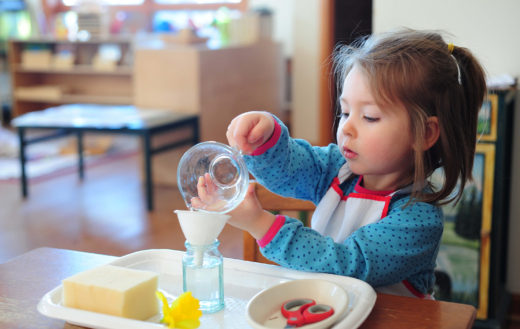Practical Life and Sensorial

Practical Life
This area of the curriculum is designed to invite the young learner to act and work on real life tasks that foster independence, coordination, order and concentration. It is in a sense the doorway to the Montessori curriculum. This is the area where the child may first choose independent work. The practical life area contains many attractively displayed objects familiar to the child, including a variety of items commonly used in the tasks of daily living, like eating, dressing, and cleaning. They offer the child meaningful, non-threatening modes of activity. The materials are also carefully designed and demonstrated to help teach skills involved with caring for the environment and the self, to encourage responsibility, autonomy and to promote high self-esteem.

Sensorial
The sensorial materials are designed to aid the child in training and refining his/her five senses. Dr. Montessori discovered that by helping children to order, compare and classify sensory stimulation, their intellectual development was greatly assisted and all future learning became more meaningful and useful. These materials have been given many names: materialized abstractions, keys to the universe, paths to culture, etc. Regardless of the name, they are simple in appearance and totally satisfying to the child. Their particularity is that they allow the children to be spontaneous when facing each activity. With or without specialized materials, the children sort things by size, shape, color, touch, sound, temperature, smell, and by weight. Children grade from dark to light and from large to small. The Montessori sensorial materials allow them to classify sensorial impressions in an organized, ordered and scientific manner.
When children come into the world their first function is to adapt to their environment so that they may become a member of the human group and culture(s) to which they belong. The mechanism by which this occurs is one of absorption of all the elements surrounding them, obeying vital inner directions common to all children. What follows is what the Montessori Method proposes as experiential sensorial activities for opening intellectual growth.

